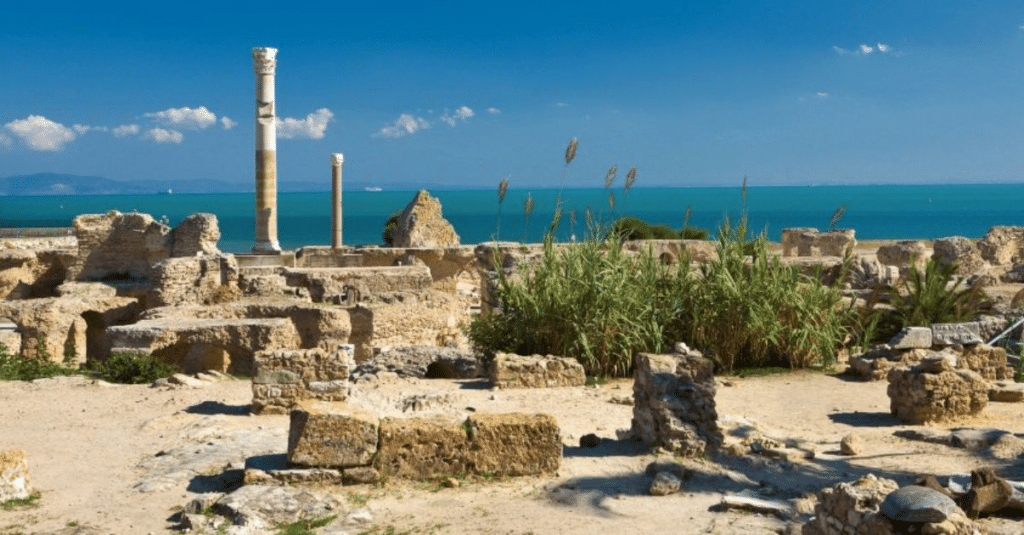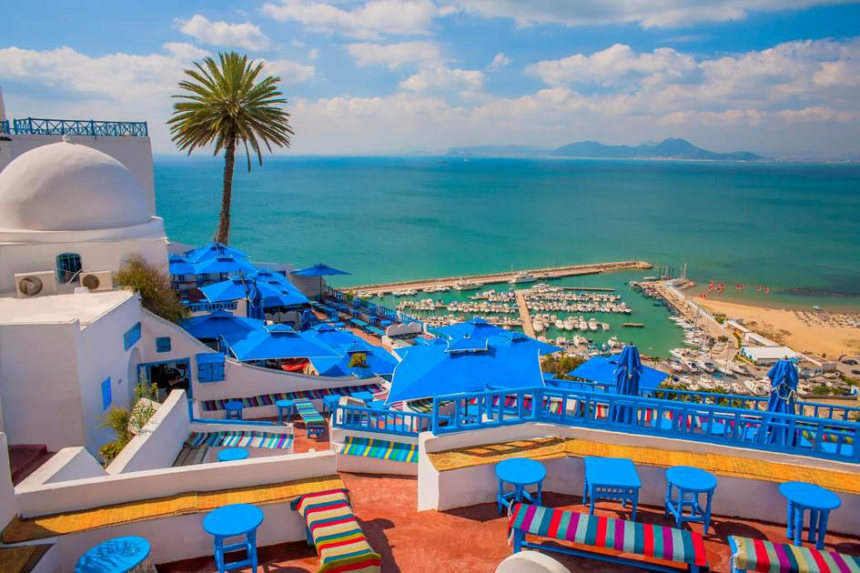Tunis, the sun-drenched capital of Tunisia, beckons with a kaleidoscope of charms. From ancient ruins whispering tales of empires past to vibrant bazaars overflowing with spices and trinkets, this coastal metropolis promises an unforgettable adventure.
But with so much to see and do, where does one begin? Worry not, intrepid traveler! This curated list unveils the top 5 places to visit in Tunis, ensuring your exploration is as mesmerizing as the azure Mediterranean Sea that embraces the city.
1. Stepping Back in Time: The Enthralling Medina of Tunis

Lose yourself in the labyrinthine alleyways of Tunis Medina, a UNESCO World Heritage Site and a testament to the city’s rich history. Cobbled streets wind past centuries-old houses adorned with ornate doorways and intricately tiled patios. The air thrums with the cacophony of haggling vendors in bustling souks, offering delectable spices, handcrafted carpets, and shimmering jewelry.
Let your senses guide you through hidden courtyards adorned with jasmine blossoms and stumble upon ancient mosques like the Zitouna Mosque, a beacon of Islamic architecture for over a thousand years. Don’t miss the Kasbah district, where Ottoman palaces whisper tales of grandeur, and the Dar Ben Abdallah museum, showcasing exquisite mosaics and artifacts from Roman times.
2. Whispers of Empires: Unveiling the Ruins of Carthage

Just a stone’s throw from the modern city lies Carthage, the once-mighty Phoenician empire that rivaled Rome itself. Step onto the windswept Byrsa Hill and imagine the bustling metropolis that stood here, its harbors teeming with merchant ships. Explore the remnants of the Antonine Baths, where Roman emperors once soaked in luxury, and marvel at the intricate cisterns that quenched the city’s thirst.
The Carthage National Museum houses an awe-inspiring collection of mosaics, pottery, and sculptures, whispering stories of forgotten heroes and battles won and lost. Let the sunset paint the ruins in shades of gold and ochre, a poignant reminder of time’s fleeting nature.
3. Azure Escape: The Allure of Sidi Bou Said

Nestled on a cliff overlooking the Mediterranean, Sidi Bou Said is a picture-perfect postcard come to life. Houses painted in the iconic cerulean and white hues tumble down the hillside, their doors adorned with wrought iron knockers and jasmine vines. Wander through the narrow streets, where the scent of bougainvillea hangs heavy in the air, and lose yourself in the maze of art galleries and charming cafes.
Climb the steps to the Sidi Bou Said Mosque, enjoy panoramic views of the shimmering sea, and watch the sun dip below the horizon, painting the sky in fiery hues. Don’t miss the Dar Cheria museum, showcasing traditional Tunisian arts and crafts, or indulge in a leisurely lunch at a seaside restaurant, savoring fresh seafood and local delicacies.
4. A Journey Through Time: The Bardo National Museum

Delve into Tunisia’s rich tapestry of history at the Bardo National Museum, housing one of the world’s most comprehensive collections of Roman mosaics. Prepare to be dazzled by breathtaking mosaics depicting mythological scenes, intricate geometric patterns, and scenes of everyday life.
Wander through galleries showcasing artifacts from Phoenician, Punic, and Islamic eras, and witness the majestic mausoleums of Roman emperors. Marvel at the mosaic depicting Virgil guiding Dante through hell, and lose yourself in the intricate details of a vibrant hunting scene. The Bardo is a treasure trove of ancient wonders, promising an unforgettable journey through time.
5. Beyond the City Walls: Stargazing in the Tunisian Sahara

Venture beyond the bustling city and immerse yourself in the ethereal beauty of the Tunisian Sahara. Escape the light pollution and gaze upon the night sky ablaze with a million stars, a humbling reminder of our place in the universe.
Camel treks across the golden dunes offer a glimpse into the nomadic way of life, while traditional Berber villages provide a taste of authentic hospitality. Witness the magic of sunrise over the endless sands, painting the sky in fiery oranges and pinks. Let the silence of the desert wash over you, a stark contrast to the vibrancy of the city, and reconnect with the raw beauty of nature.
Your Tunis Exploration Awaits:
These five destinations are just the tip of the iceberg, a tantalizing glimpse into the treasures that Tunis holds. Here are some additional tips to make your exploration even more rewarding:
Planning Your Trip:
- Seasons: Spring and autumn offer pleasant temperatures, while summer can be scorching. Winter offers lower prices but limited daylight hours.
- Getting Around: Public transportation is affordable and efficient, but taxis are readily available. Consider a Tunis City Card for discounts on attractions and transportation.
- Accommodation: Hotels cater to all budgets, while charming riads offer a traditional ambiance. Airbnb options are also prevalent.
- Currency: The Tunisian dinar (TND) is the official currency. ATMs are widely available, but some shops accept euros or dollars.
A Final Enchantment:
Tunis is a city that unveils itself slowly, a tapestry woven from ancient whispers and modern rhythms. By immersing yourself in its vibrant culture, delectable cuisine, and mesmerizing landscapes, you’ll discover its enchanting beauty beyond the top 5. So, pack your bags, embrace the spirit of adventure, and let Tunis weave its magic on you.
FREQUENTLY ASKED QUESTIONS:
Q1. Is it safe to travel to Tunis as a solo traveler?
Tunis generally enjoys a safe reputation for tourism, particularly in well-lit and populated areas. However, as with any travel, basic precautions are advised. Be mindful of your belongings, avoid venturing into deserted areas at night, and dress modestly in sensitive locations. Trust your instincts and don’t hesitate to ask locals for advice if needed.
Q2. What language should I speak in Tunis?
Arabic is the official language, but French is widely spoken due to Tunisia’s colonial history. English is becoming increasingly common, especially in tourist areas. Learning a few basic Arabic phrases can enhance your experience and show respect to the local culture, but even simple gestures and a smile go a long way.
Q3. Is it easy to find vegetarian or vegan food options in Tunis?
While meat-based dishes are common, vegetarian and vegan options are becoming increasingly available, especially in tourist areas. Restaurants often offer vegetable tagines, couscous variations with chickpeas or lentils, and mezze platters with fresh salads and dips. Look for restaurants with “végétarien” or “végétalien” options, or ask servers for recommendations. Some local markets also offer fresh fruits and vegetables for self-catering.





